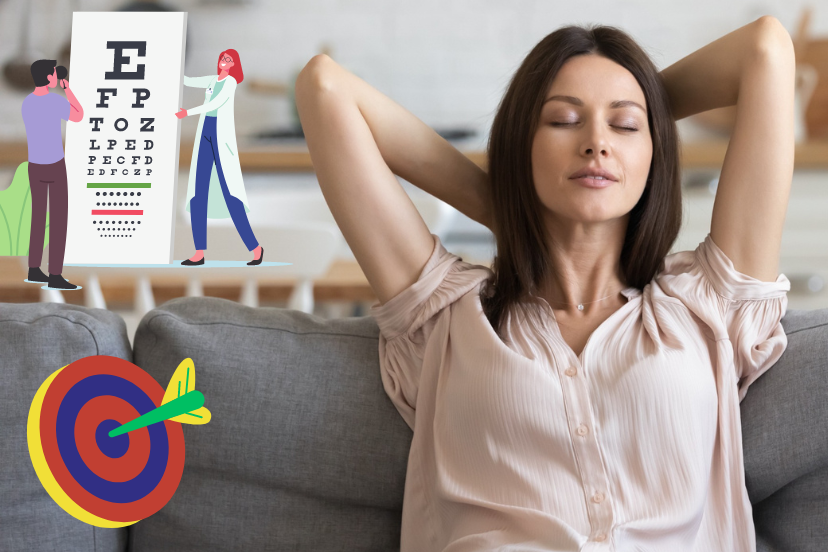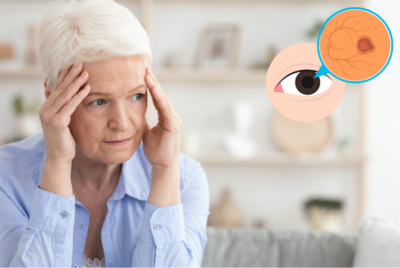When Is It Too Late To Treat Lazy Eye
As a researcher and advisor on vision health, I believe that addressing eye-related concerns early on is crucial to ensuring optimal visual health and well-being. One condition requiring early intervention is a lazy eye, medically known as amblyopia. In this When is it too late to treat lazy eye article, we will explore the reasons why early treatment for lazy eye is essential and discuss the age considerations, risks of delayed treatment, latest advancements, lifestyle changes, and the importance of support and awareness. So, let’s dive in and understand when it might be too late to treat lazy eyes.
When Is It Too Late To Treat Lazy Eye – Introduction
Lazy eye, or amblyopia, is a condition that occurs when one eye fails to develop normal vision during childhood. This commonly happens when there is a significant difference in vision between the two eyes, leading the brain to rely more on the stronger eye and neglect the weaker one. It is estimated that lazy eye affects approximately 3% of children.
Early treatment is of utmost importance because, during childhood, the brain is still developing and has a higher potential for neuroplasticity. Neuroplasticity refers to the brain’s ability to reorganize and form new connections, making it more receptive to interventions that can improve visual function.
Causes
Amblyopia can be caused by various factors, with the two most common ones being amblyopia itself and strabismus. Amblyopia occurs when the brain suppresses or ignores the visual input from one eye. Strabismus, on the other hand, refers to the misalignment of the eyes, which can cause the brain to receive conflicting visual information.
Symptoms
One of the challenges with lazy eye is that it may not be immediately noticeable, especially in young children who may not be able to communicate their vision problems effectively. However, some common symptoms of lazy eye include blurred or double vision, poor depth perception, and difficulty in seeing 3D objects. These symptoms may become more evident when the child performs tasks that require precise vision, such as reading or catching a ball.
Diagnosis
A comprehensive eye examination is necessary to determine if a child has a lazy eye. An eye care professional will assess the child’s visual acuity and perform various tests to evaluate the eye’s alignment and focusing ability. Vision testing, including the use of eye charts, may also be conducted to assess the clarity and sharpness of vision.
Treatment Options
A lazy eye can be treated through a combination of approaches tailored to the individual needs of the patient.
The most common treatment methods include eye patching, eyeglasses, and vision therapy.
Eye Patching
Eye patching involves covering the stronger eye to encourage the weaker eye to develop stronger visual acuity.
Eyeglasses
Eyeglasses can help correct refractive errors and improve vision.
Vision Therapy
Vision therapy, conducted under the guidance of a trained professional, involves exercises and activities aimed at improving visual skills and coordination.
Age Considerations
While lazy eye is typically diagnosed during childhood, it is important to note that treatment can still be effective in adults. However, the age at which treatment begins can influence the outcome. During childhood, the visual system is more malleable, allowing for greater improvement with intervention. It is generally recommended to start treatment for lazy eyes before the age of 7 to maximize the chances of success. However, even if treatment begins after this age, significant improvements can still be achieved, albeit with more dedicated effort and time.
Risks Of Delayed Treatment
Delaying or not seeking treatment for lazy eye can have serious consequences. Without intervention, the weaker eye may not develop normal visual acuity, leading to a permanent loss of vision. Additionally, lazy eye can impact a person’s emotional well-being and social interactions, potentially affecting self-esteem and confidence.
Factors Affecting Treatment Success
The success of lazy eye treatment depends on several factors, including age and the severity of the condition. Younger children generally respond better to treatment due to the greater neuroplasticity of their developing brains. The severity of lazy eye can also influence treatment outcomes, with milder cases typically having a higher chance of improvement.
Latest Advancements
Advancements in technology have opened up new possibilities for lazy eye treatment. Virtual reality therapy, for example, has shown promising results in engaging children and adults in vision exercises that can improve visual acuity and coordination. This immersive approach makes the treatment process more enjoyable and interactive, potentially increasing compliance and overall success.
Importance 0f Early Intervention
The importance of early intervention in treating lazy eye cannot be overstated. Starting treatment as soon as possible increases the likelihood of improving vision and reducing the risk of long-term complications. The brain’s plasticity decreases with age, making it more challenging to achieve substantial improvements in visual acuity.
Lifestyle Changes
In addition to formal treatment methods, specific lifestyle changes can support the management of lazy eyes. Encouraging eye exercises, such as focusing on near and far objects or tracking moving targets, can help stimulate visual development. Limiting screen time and promoting outdoor activities can also contribute to overall eye health.
Support And Awareness
Support from parents, caregivers, and educators is crucial in the treatment journey of lazy eye. Involvement in the child’s vision care, ensuring regular eye examinations, and following treatment recommendations are vital for optimal results. Furthermore, raising awareness about lazy eye within the community and educating others about the importance of early treatment can help identify cases earlier and promote timely intervention.
When Is It Too Late To Treat Lazy Eye – Conclusion
In conclusion, lazy eye, or amblyopia, is a condition that requires early treatment to maximize the chances of improving vision and minimizing the risk of long-term complications. Early intervention is crucial as the developing brain is more receptive to treatment during childhood. Delaying or neglecting treatment can lead to permanent vision loss and impact a person’s emotional well-being.
By recognizing the signs, seeking timely diagnosis, and exploring appropriate treatment options, we can give individuals with lazy eye the best opportunity for improved vision and a brighter future.
Frequently Asked Questions (FAQs)
What age should lazy eye treatment start?
Treatment for lazy eye should ideally start before the age of 7 to maximize the chances of success. However, even if treatment begins after this age, significant improvements can still be achieved with dedicated effort and time.
Can lazy eyes be treated in adults?
Yes, lazy eyes can be treated in adults, although the outcomes may vary compared to treatment during childhood. The earlier the treatment starts, the better the chances of improvement.
Is it too late to treat lazy eyes after puberty?
While it is generally more challenging to treat lazy eyes after puberty, treatment can still be beneficial. However, it may require more dedicated effort and time to achieve significant improvements.
Are there any home remedies for lazy eyes?
A lazy eye cannot be cured through home remedies alone. It requires professional intervention to address the underlying visual issues, such as eye patching, eyeglasses, or vision therapy.
What can I do to prevent lazy eye?
Regular eye examinations during childhood are essential to identify and treat lazy eyes early on. Additionally, promoting a healthy lifestyle that includes proper nutrition and limiting screen time can contribute to overall eye health and reduce the risk of visual conditions like lazy eye.




